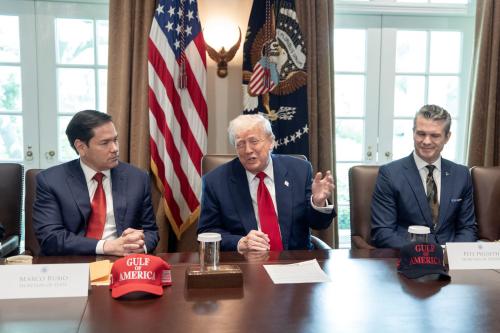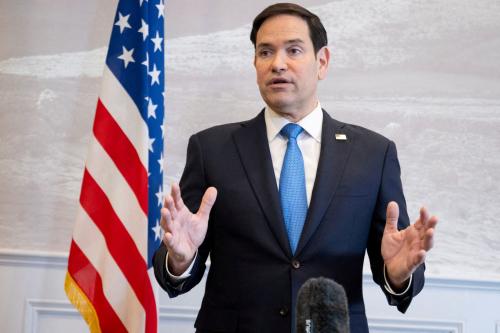On January 26th, Vice President Joe Biden will convene a high-level summit in Washington, D.C. to advance the implementation of the Caribbean Energy Security Initiative (CESI) with leaders from the region, the private sector and the multilateral financial institutions. CESI is intended to help the Caribbean island states overcome their dependence on imported (and traditionally expensive) fossil fuels, such as diesel, to generate power. Caribbean states historically experienced electricity rates two to three times higher than the U.S. average. This is a major expense for countries that are still developing, many of which are highly dependent on energy-intensive industries such as tourism. A number of Caribbean nations have thus far managed high costs of energy with assistance from PetroCaribe, a program that provides financial subsidies for the purchase of oil from Venezuela. But PetroCaribe’s future is in doubt due to the serious and worsening economic crisis now facing Venezuela. This highlights the importance of transitioning Caribbean states to a sustainable and diverse energy matrix that would shield them from dependence on a single type of energy source from an increasingly unreliable supplier.
Under PetroCaribe, Caribbean nations are able to finance 40 to 60 percent of their imports through long-term loans at low interest rates. While this provides short-term relief, it comes at the long-term cost of steep debt accumulation and vulnerability to Venezuelan political pressure; as of 2013, PetroCaribe member states had accumulated over $20 billion in debt to Venezuela. PetroCaribe subsidies are proportional to oil prices and once the price of oil drops below $50, the financial subsidy from Venezuela begins to diminish. This means that countries must pay for a larger percentage of imported oil up front. At the present level of $40 per barrel, only 30 percent of the total imported from Venezuela can be financed, and the percentage will drop further as oil prices continue to fall. This makes participation in Petrocaribe less attractive and less important. To put this in perspective, the international market price of oil is now lower than the upfront cost of subsidized PetroCaribe oil to the Caribbean in 2011 and 2012.
Even with the prospects of fading assistance from Venezuela through PetroCaribe, the drop in the price of oil in 2014-2015 creates disincentives for Caribbean basin nations to transition to a new energy matrix. Less expensive oil means that the Caribbean has new options for affordable fossil fuel. It also means they will need to allocate less foreign exchange to pay for energy imports compared to previous years, reducing the sense of urgency for undertaking the transition.
Yet in a scenario where oil prices remain low, transitioning to a new energy matrix still has many advantages, as I discussed last year in a policy brief on energy options for Central America and the Caribbean. A transition now is a hedge against the long-term rise in oil prices. If a new matrix includes locally generated energy from solar, wind, tide and geothermal sources, it will also have a long-term effect of reducing the need to import petroleum products. This would have a favorable effect on the region’s balance of trade. Alternative energy sources also have a lower environmental impact, which is especially important to island states dependent on tourism and highly exposed to the impact of climate change. A diversified and sustainable energy matrix would also eliminate the risks, political and economic, of relying too heavily on a single supplier like Venezuela.
What the Caribbean Energy Security Initiative Needs to Accomplish
The Caribbean Energy Security Initiative is critical to the future economic development of Caribbean basin nations. Ideally, it should be a platform to help Caribbean basin nations overcome financial, technological, regulatory and political obstacles to transitioning to a diverse and sustainable energy matrix. CESI should focus on:
- Financing new sources of energy for Caribbean consumers: Many of the Caribbean states carry relatively heavy debt loads, and even if PetroCaribe members have had access to financial subsidies, participation in the program still led to high levels of indebtedness to Venezuela. As a result, many of the countries most dependent on imported energy also have relatively poor credit ratings, making it difficult for them to access loans that might cover the upfront costs for transitioning to a new energy matrix. This is where multilateral financial institutions and private sector advisors participating in CESI should assist Caribbean basin nations in accessing the financing necessary to invest in a sustainable energy matrix.
- Sharing new technology for cost-effective and small-scale energy generation: Many of the island states are quite small, which means that economies of scale in energy production are difficult to achieve. It is possible, although not easy, to transmit energy between islands to make larger-scale projects viable. While the costs of smaller-scale generation projects for sustainable technology such as wind and solar are dropping, they will still find it difficult to compete with fossil fuels at the present lower prices. There is therefore an important role for CESI in sharing information on new technologies that would allow smaller-scale but cost-effective energy generation in the smaller states in the region, as well as new approaches to transporting standard energy sources, such as containerized natural gas.
- Harmonizing regional regulatory regimes: International private investors can afford to develop energy generation projects in the Caribbean even without public financing. However, the private sector is put off by the variation in rules, regulations and state capacity across the large number of countries present in the region. In addition, there are questions over the consistency and predictability of some Caribbean governments. Some private investors have quietly voiced concerns that investments may be held hostage to unfavorable regulatory rulings or even future expropriation. CESI should focus on overcoming the disincentives created by regulatory diversity in the Caribbean to create a more predictable region-wide framework for the energy sector. This would create positive conditions for the private sector to invest in projects that will be both profitable for producers and reduce costs for consumers in the long-term.
- Creating political momentum for sustained change: Leaders from the Caribbean, the United States, the private sector and the multilateral financial institutions should focus special attention on this. Whenever the global price of energy drops, it is difficult to persuade consumers to pay the costs of transitioning to a more sustainable long-run energy solution. Providing the appropriate set of incentives and political arrangements for success will fall to leaders from the region and their international partners. The summit on January 26th is an excellent time to launch a long-term effort to sustain the political will to undertake measures that will attract financing and build a coordinated regulatory framework to undergird investment in a sustainable energy matrix.
The Brookings Institution is committed to quality, independence, and impact.
We are supported by a diverse array of funders. In line with our values and policies, each Brookings publication represents the sole views of its author(s).



Commentary
Making the Caribbean Energy Security Initiative a Success
January 23, 2015